Texas beef has long stood as a cornerstone of the state’s identity, embodying a rich history that is as robust and enduring as the cattle that roam its vast landscapes. This narrative is not merely about the meat that graces tables across the nation but a tale of evolution, resilience, and innovation that has shaped the economic and cultural fabric of Texas. From the early influences of Spanish ranching to the modern-day emphasis on sustainability and environmental stewardship, the journey of Texas beef is a testament to the state’s ability to adapt and thrive amidst changing times. As we delve into the origins and growth of this industry, we will uncover the pivotal moments that have cemented Texas beef as an American icon. Whether you’re a culinary enthusiast, a history buff, or part of the industry itself, this exploration will provide a deeper understanding of the forces that have driven the Texas beef industry from its humble beginnings to its current status as a global powerhouse.
The Origins and Evolution of the Texas Beef Industry
Tracing its lineage back to the 1500s, the Texas beef industry’s roots are as deep and sprawling as the state’s own prairies. It was the Spanish settlers who introduced the first cattle to the region, among them the robust Andalusian breed, forebears to the iconic Texas Longhorns. These early herds set the groundwork for a burgeoning industry under the expansive Texan sky.
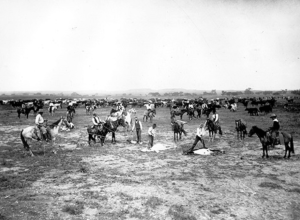 In those formative years, the bond between Texans and their cattle was unbreakable, with the burgeoning economy heavily reliant on these burgeoning herds. As settlements expanded, so too did the ranching culture, evolving from its Spanish vaquero origins into a distinctive Texan phenomenon characterized by cowboys and sprawling cattle operations. Yet, the industry’s reliance on semi-wild cattle breeds was not destined to last in the face of growth and demand. The 19th century brought with it a shift towards selective breeding, enhancing the stock’s quality.
In those formative years, the bond between Texans and their cattle was unbreakable, with the burgeoning economy heavily reliant on these burgeoning herds. As settlements expanded, so too did the ranching culture, evolving from its Spanish vaquero origins into a distinctive Texan phenomenon characterized by cowboys and sprawling cattle operations. Yet, the industry’s reliance on semi-wild cattle breeds was not destined to last in the face of growth and demand. The 19th century brought with it a shift towards selective breeding, enhancing the stock’s quality.
The westward expansion of America presented Texas ranchers with a golden opportunity to refine their herds. They introduced British breeds, such as the Shorthorn and Hereford, prized for their superior meat and ease of fattening. These were crossbred with the native Longhorns, yielding cattle that were not only resilient to local diseases but also more suitable for beef production. This crossbreeding marked a pivotal moment in the industry, coinciding with the nation’s industrial boom and a burgeoning appetite for beef.
Innovation and entrepreneurial spirit were the catalysts propelling the Texas beef industry into the future. The state became a trailblazer in cattle rearing, ranching methodologies, and beef production techniques, setting standards that would resonate nationwide. Early adoption of transportation and refrigeration technologies ensured that Texas beef could grace dining tables far beyond its borders.
This transformative era paved the way for the storied cattle drives, the flourishing of cowboy culture, and the global eminence of the Texas beef industry. The narrative of its evolution from open ranges to modern feedlots is a tribute to the tenacity and ingenuity of Texans, who have consistently sought excellence and prosperity in beef production.
Spanish Influence and the Beginnings of Ranching
The saga of Texas beef is etched in the trails left by Spanish cattle, first brought over by Juan de Oñate in 1598. These early herds, essential for the survival of Spanish missions and colonies, were the precursors to a thriving ranching industry. Adapted to the demanding Texan environment, these cattle were the epitome of hardiness.
Spanish ranching traditions, transplanted to the New World, took root and flourished. As missions proliferated, so did the need for reliable food sources, leading to the establishment of mission herds and the vaquero culture—precursors to the American cowboy.
Under the Spanish mission system, ranching revolved around vast grazing lands known as Ranchos, setting the stage for open-range ranching that would define the industry for generations. More than just an economic pursuit, ranching cultivated a spirit of self-reliance and community centered on cattle.
The melding of indigenous and Spanish ranching techniques created a unique Mestizo approach, mirroring the region’s diverse cultural landscape. Innovations such as specialized saddles and lariats emerged out of necessity, facilitating cattle management across the expansive terrain. This cultural synergy laid the groundwork for the Texan identity, synonymous with cowboys and their boundless ranges.
Spanish colonial laws also left an indelible mark, shaping land ownership and usage practices that would influence Texas ranching for centuries. The principles of open range and communal grazing, for instance, have their roots in these early regulations.
As Texas evolved from a Spanish colony to a Mexican state and eventually to an independent republic and part of the United States, the Spanish legacy endured within the ranching culture. This enduring influence is evident not only in the cattle’s lineage but also in the enduring practices, culture, and spirit of Texas beef ranching—a testament to resilience, community, and a deep connection with the land.
Transition to Improved Cattle Breeds
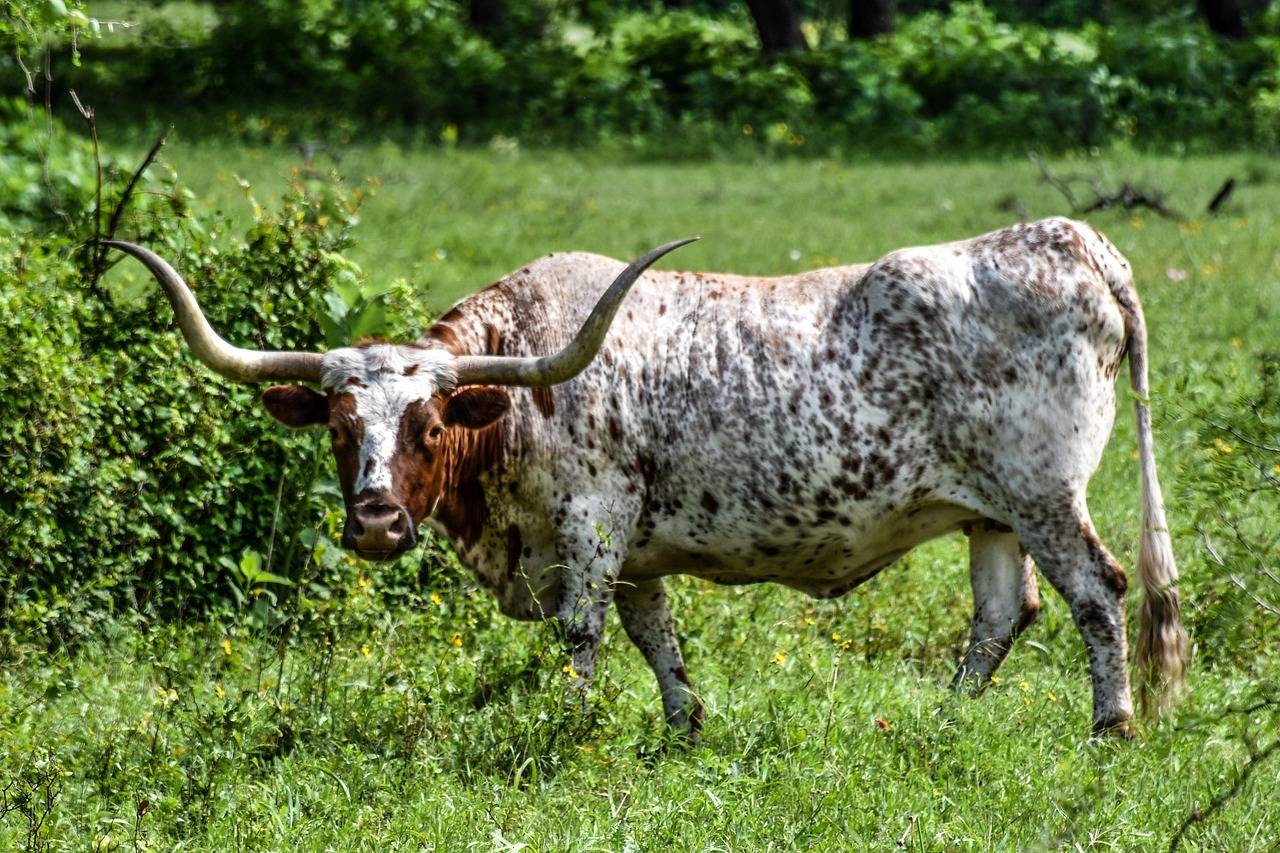
The latter half of the 19th century marked a transformative period for the Texas cattle industry, as ranchers began to move away from the untamed Spanish stock that had roamed wild, giving rise to the iconic Texas Longhorn. This shift was driven by a burgeoning need to enhance the industry’s profitability and efficiency.
The introduction of British cattle breeds such as the Shorthorn, Hereford, and Angus represented a significant turning point. These breeds were interbred with the native Longhorns, conferring desirable characteristics such as superior meat quality, increased milk production for calves, and better adaptability to diverse climates. While the Longhorns were known for their resilience in the face of Texas’s challenging landscapes, they were leaner and less manageable. The British breeds brought to the table a heftier muscle build and improved marbling of meat, which aligned with the tastes and demands of expanding markets.
The burgeoning network of railroads that connected Texas with the rest of the nation spurred a demand for beef that was consistent in quality, tenderness, and flavor. These improved breeds were well-suited to the changing landscape of ranching, which was moving towards more controlled, fenced pastures and stationary feeding operations.
Through selective breeding, ranchers were able to concentrate on specific traits that would increase their returns and satisfy consumer expectations. This period of innovation and adaptation not only revolutionized cattle ranching practices but also solidified the reputation of Texas beef, ensuring a product of consistent quality and excellence.
The introduction of Brahman cattle from India further diversified the genetic pool, bringing traits such as pest resistance, heat tolerance, and overall hardiness. The resulting ‘American’ breeds, like the Beefmaster, emerged from this genetic melting pot, embodying the best attributes from their diverse lineage and proving well-suited to the Texan climate and ranching conditions.
This strategic shift towards improved cattle breeds is a testament to the Texas beef industry’s dedication to progress and excellence, laying the groundwork for a legacy of quality that continues to define Texan beef production.
The Cattle Drive Era and Economic Impact
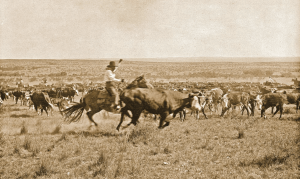 Following the Civil War, the Texas beef industry entered a golden age known as the cattle drive era, which lasted from roughly 1866 to 1886. This period was characterized by the movement of vast herds of cattle from the ranches of Texas to the railheads in Kansas and beyond, meeting the soaring demand for beef in the burgeoning urban centers of the North and East.
Following the Civil War, the Texas beef industry entered a golden age known as the cattle drive era, which lasted from roughly 1866 to 1886. This period was characterized by the movement of vast herds of cattle from the ranches of Texas to the railheads in Kansas and beyond, meeting the soaring demand for beef in the burgeoning urban centers of the North and East.
During this time, Texas was home to an abundance of cattle that had accumulated, largely undisturbed, due to the war’s interruption of market activities. Sensing an opportunity, Texas cattlemen began organizing large-scale drives to transport these cattle to market, employing cowboys to herd them across the expansive and often treacherous trails, with the Chisholm Trail becoming one of the most significant routes.
The cattle drives were ventures of high stakes, with profits and perils walking hand in hand. Cowboys faced the wrath of nature, the ruggedness of the terrain, and the constant threat posed by rustlers. Yet, the financial rewards were compelling; cattle that were purchased for a modest sum in Texas could fetch up to ten times that amount in northern markets.
This era spurred advancements in cattle handling and management and catalyzed the growth of related industries such as leatherworking and meatpacking. The economic ripple effect was substantial, with the influx of capital breathing new life into the Texas economy and cementing the state’s position as a dominant force in the national beef market. Towns that sprang up along the trails transformed into hubs of commerce and activity.
The cattle drive era also left an indelible mark on American culture, with the cowboy emerging as a symbol of rugged individualism and the spirit of adventure. The cowboy’s way of life became emblematic of the economic pursuits of the time as they etched out their existence against the vastness of the plains.
However, this epoch was destined to be brief. The expansion of railroads into Texas and the enclosure of open ranges with barbed wire brought about the decline of long-distance cattle drives. The industry adapted to a new economic reality, characterized by more settled ranching operations and the end of the open-range era.
Despite its transitory nature, the cattle drive era was a defining chapter in the narrative of Texas beef, leaving a legacy of economic ingenuity, resilience, and the enduring cowboy ethos that continues to resonate within the identity of Texas and the broader American West.
The Economics and Trails of Cattle Drives
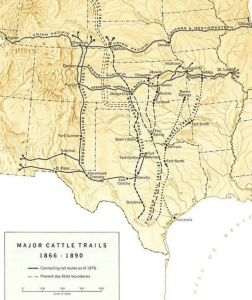 The cattle drive, a cornerstone of the Texas beef legacy, was a strategic response to the economic disparity between the cattle-rich state and the beef-starved northern markets. In the wake of the Civil War, Texas was teeming with cattle that could be bought for a pittance and sold for a premium in the urban centers of the North. This price gap was the impetus for the iconic drives.
The cattle drive, a cornerstone of the Texas beef legacy, was a strategic response to the economic disparity between the cattle-rich state and the beef-starved northern markets. In the wake of the Civil War, Texas was teeming with cattle that could be bought for a pittance and sold for a premium in the urban centers of the North. This price gap was the impetus for the iconic drives.
Orchestrating a cattle drive was no small feat; it demanded meticulous planning and a substantial outlay of resources. Ranchers would amass herds that could number in the thousands and recruit a cadre of cowboys to shepherd them across the plains. The trail boss, a pivotal figure, shouldered the responsibility for the drive’s success, charting the course and making pivotal decisions. The team also included wranglers to tend to the horses and cooks to sustain the crew.
The Texas Longhorn, renowned for its resilience, was the breed of choice during the early days of the drives. These cattle were well-adapted to the grueling trek that spanned hundreds of miles. Drives were timed for spring to coincide with the lushness of the grasslands, providing natural fodder for the cattle along the way. The success of these drives hinged on traversing the open range—an expanse of unclaimed land—and locating trails with ample water and grazing opportunities.
Prominent trails like the Chisholm and Goodnight-Loving became lifelines of commerce, stretching from Texas to railheads in Kansas and beyond. The selection of a trail was a calculated decision influenced by factors such as proximity to railheads, the condition of the range, and the distance to be covered.
The economic ripple effect of cattle drives was profound. They spurred growth not only for ranchers but also for the burgeoning railroad industry, frontier towns that served as waypoints, and the nascent meatpacking sector in the North. The drives also fueled a market for essential supplies, from leather boots to wagons.
Yet, the success of cattle drives sowed the seeds of their own obsolescence. The deluge of cattle strained resources, inciting conflicts with settlers and leading to the enclosure of open ranges. Despite its economic contributions, the era of the cattle drive was unsustainable, yielding to technological advancements like barbed wire and the evolving transportation landscape.
The legacy of the cattle drive era transcended its economic impact, capturing the essence of the Old West and embedding itself in the cultural fabric of Texas, a testament to the state’s enduring entrepreneurial spirit.
Rise of the Railroads and Market Expansion
The advent of the railroad marked a pivotal chapter in the story of Texas beef, revolutionizing the industry with newfound efficiency and market reach. While cattle drives had their time, the railroad heralded an era of accelerated growth and logistical prowess.
The introduction of rail transport was a game-changer. Where once herds were painstakingly driven across vast distances, now they could be transported en masse, swiftly and safely, to markets far beyond Texas. The 1870s saw rail lines penetrate the heart of cattle country, linking Texas directly with consumers nationwide.
The railroad’s impact on Texas beef was multifaceted. It facilitated the delivery of fresh beef to distant locales, broadening the consumer base and making Texas beef a household name across the country. The efficiency of rail transport also drove down costs, making beef more accessible to the average American.
In the Midwest, Chicago emerged as the epicenter of meatpacking, with industry giants setting up shop close to the rail hubs and cattle supplies. These plants introduced assembly-line techniques that revolutionized meat processing, while refrigerated cars ensured that beef remained fresh upon arrival to its destination.
Back in Texas, the railroad transformed cattle ranching practices. Ranchers could now manage larger herds within fenced ranges, optimizing productivity and contributing to an increase in ranch sizes.
Moreover, the railroad’s mass transit capabilities opened international markets to Texas beef, further expanding its economic footprint. By the turn of the century, Texas beef had transitioned from a regional specialty to an integral component of the American diet and a player on the global stage.
The railroad’s integration into the Texas beef industry marked a significant leap in economic complexity, cementing the state’s role as an agricultural powerhouse and setting the stage for the modernized operations that would define its future.
Beef Production and Industry Modernization
As the era of cattle drives waned, the advent of railroads marked a pivotal shift in the Texas beef industry, heralding an age of modernization across the entire spectrum of production. The transformation touched every aspect, from the ranches where the cattle grazed to the facilities where they were processed and the methods by which the beef was distributed.
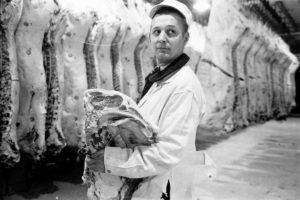 The waning of the open range, precipitated by the advent of barbed wire fencing and escalating land ownership conflicts, catalyzed a move toward more systematic, science-based cattle-rearing techniques. Texas ranchers, once reliant on the hardy but less commercially viable Longhorn, began to crossbreed with superior meat-producing strains such as Herefords and Angus. This genetic refinement yielded livestock that aligned more closely with the evolving consumer palate, favoring leaner, more succulent cuts of beef.
The waning of the open range, precipitated by the advent of barbed wire fencing and escalating land ownership conflicts, catalyzed a move toward more systematic, science-based cattle-rearing techniques. Texas ranchers, once reliant on the hardy but less commercially viable Longhorn, began to crossbreed with superior meat-producing strains such as Herefords and Angus. This genetic refinement yielded livestock that aligned more closely with the evolving consumer palate, favoring leaner, more succulent cuts of beef.
Concurrently, veterinary science made significant strides, enhancing herd health and increasing productivity. The introduction of vaccines to combat prevalent cattle diseases, the development of antibiotics, and the formulation of nutrient-rich feeds all contributed to a marked uptick in the efficiency of beef production. These advancements in animal husbandry were complemented by the development of extensive water infrastructure, ensuring that even the most remote pastures had reliable water sources.
The meatpacking sector was not left behind in this wave of innovation. The introduction of refrigeration technology revolutionized the preservation of beef, allowing for the transportation and storage of fresh meat over greater distances and for extended periods. This breakthrough expanded the market reach of Texas beef producers dramatically.
Moreover, the meatpacking process itself was refined with the introduction of specialized machinery and streamlined operations. The early 20th century witnessed the emergence of assembly line techniques in meatpacking facilities, a concept pioneered by industry leaders such as Gustavus Swift. These enhancements not only heightened production efficiency but also set new benchmarks for workplace safety.
The distribution network for beef underwent its own revolution with the construction of the national interstate highway system in the 1950s. Trucking became a vital and versatile mode of transport, delivering beef products from processors directly to retailers, thus augmenting the capabilities of rail transport and facilitating the swift proliferation of the beef market.
Through these multifaceted modernization efforts, Texas not only met the growing demands of an expanding population but also cemented its status as a trailblazer in the industry. As Texas beef producers moved into the latter half of the 20th century, they carried with them a legacy of ingenuity and excellence that would continue to shape their approach to an ever-evolving marketplace.
Modernization and Industry Leadership
Progressing through the 20th century, the Texas beef industry not only kept pace with modernization but also took the reins of leadership within the global marketplace. A spirit of innovation spurred the adoption of cutting-edge technologies and methodologies, ensuring the industry remained at the vanguard of meeting shifting consumer expectations.
In the realm of ranch operations, the integration of GPS and satellite technologies revolutionized the management of cattle and pasturelands. This precision in tracking and grazing management translated into healthier herds and optimized land use. Data analytics further empowered ranchers, providing deep insights that informed breeding, nutrition, and herd management decisions, thereby elevating productivity. Order meat online now.
The commitment to modernization also encompassed sustainable practices. Texas ranchers pioneered rotational grazing to mitigate the effects of overgrazing and actively participated in conservation initiatives, preserving the integrity of the state’s natural landscapes.
On the processing front, technological leaps in automation, such as sophisticated cutting and deboning lines, coupled with advanced refrigeration systems and rigorous safety protocols, refined the production process to an art form. Texas processors set a benchmark for excellence, often surpassing regulatory requirements to consistently deliver superior quality beef.
In the marketing arena, Texas Beef carved out a unique identity, weaving the narrative of its rich heritage into its branding strategies. This storytelling approach not only differentiated Texas beef but also resonated with consumers, linking the product to the state’s storied tradition of independence and resilience.
Proactively responding to health-conscious consumers, Texas producers led the charge in offering organic and grass-fed beef options, catering to preferences for naturally raised livestock without reliance on antibiotics or hormones.
Moreover, Texas beef expanded its global footprint by capitalizing on trade agreements and export promotion strategies, reinforcing its role as a key player in the international market and a contributor to global nutrition.
Through these concerted efforts, Texas solidified its leadership position, marrying tradition with innovation to maintain its standing at the forefront of the beef industry.
Environmental and Sustainable Practices
The Texas beef industry, historically known for its vast herds and iconic ranches, has progressively shifted its gaze to the horizon of sustainability and ecological responsibility. The sprawling ranges that have long sustained bovine herds are now the epicenter of initiatives aimed at preserving these environments for the cattle of tomorrow.
Acknowledging the symbiotic relationship between land health and agricultural productivity, ranchers have widely adopted rotational grazing. This method, which involves the strategic movement of cattle among pastures, allows for the rejuvenation of plant life, bolsters soil vitality, and curtails erosion.
In the face of intermittent droughts, water conservation has ascended to a priority within the industry. Ranchers have embraced innovations such as efficient irrigation systems and comprehensive water management strategies, securing this indispensable resource’s future.
Efforts to curtail the carbon footprint of cattle rearing have led to the adoption of feed efficiency practices, reducing the requisite feed per unit of beef. Furthermore, dietary adjustments have been explored to mitigate methane—a potent greenhouse gas—produced during digestion.
The industry’s environmental consciousness extends to wildlife conservation, with ranching practices being fine-tuned to support native fauna and flora. This harmonious approach not only fosters biodiversity but also enriches the ecosystems that support ranching livelihoods.
Collaborative endeavors with governmental bodies and conservation groups have yielded protective measures for vast tracts of rangeland, thwarting overdevelopment and preserving Texas’s bucolic essence. Moreover, the push for a transparent supply chain has bolstered consumer confidence, ensuring that the beef they consume is sourced from environmentally conscious endeavors.
Through these multifaceted efforts, the Texas beef industry has underscored its commitment to the land and communities it serves, reinforcing its role as a pioneer in both beef production and sustainable agricultural practices.
Conservation Efforts in Ranching
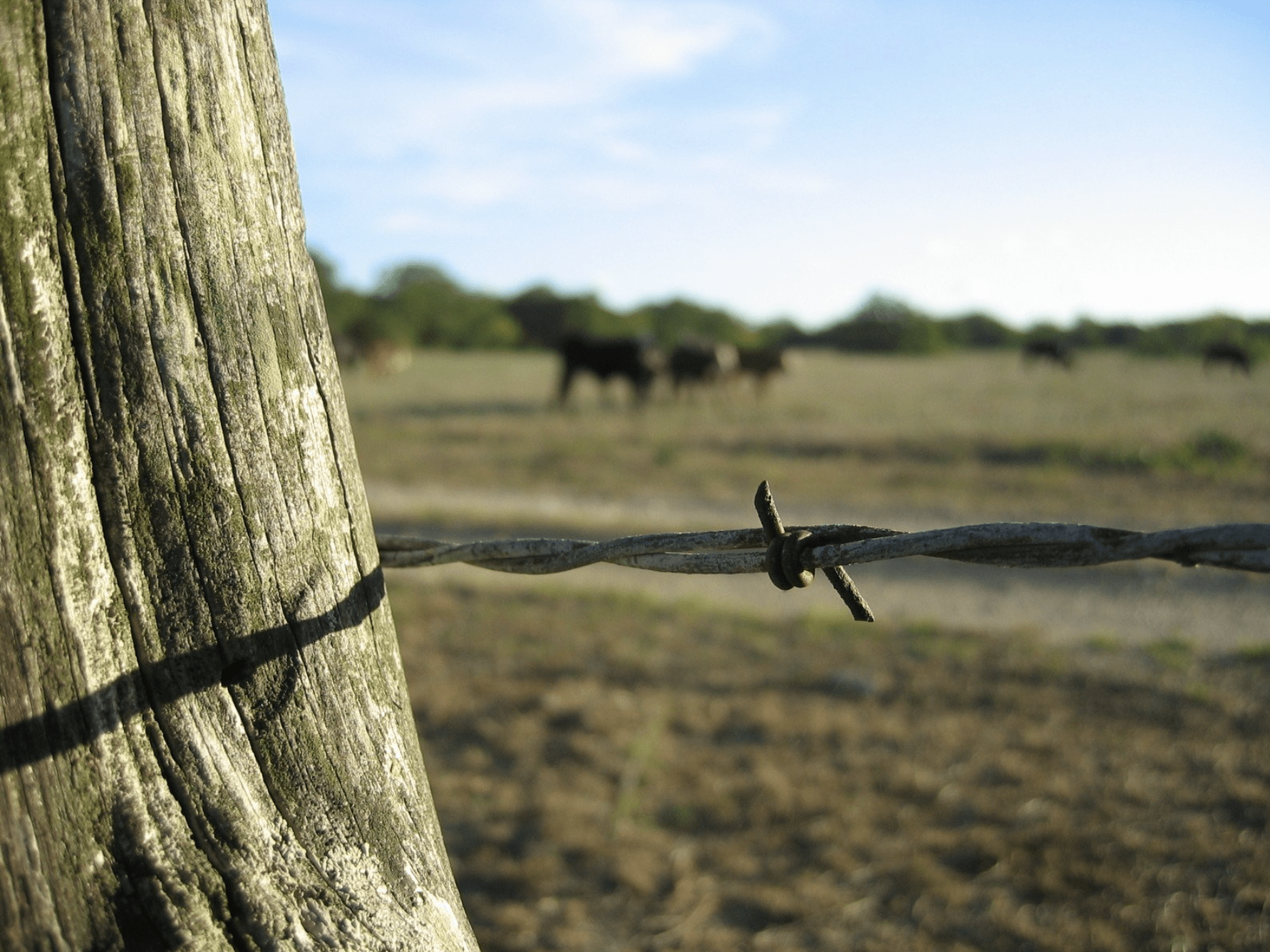
In the Texas beef industry, conservation has evolved from a mere environmental consideration to a cornerstone of ranching operations, ensuring the sector’s enduring success. Ranchers have embraced a suite of land stewardship practices that foster soil robustness and ecological diversity.
The cultivation of cover crops is one such practice, which not only shields the soil from erosion but also enriches it, supporting both pastureland and waterway health. These efforts are part of a larger strategy to maintain the delicate balance of the ranching ecosystem.
Grassland conservation programs, such as the Texas Prairie Rivers initiative, exemplify the dual commitment to protecting avian habitats while also catering to the economic imperatives of cattle ranching. Similarly, the management of invasive plant species like mesquite and juniper is critical to restoring native grasslands that are more conducive to grazing and environmental health.
Water resource management has also taken center stage, with ranchers implementing rainwater collection systems and constructing reservoirs to mitigate the impacts of water scarcity on both agriculture and the surrounding habitats.
Technological advancements have further bolstered conservation efforts. Satellite imagery and GIS mapping provide invaluable insights into land conditions, enabling ranchers to adapt their management practices in response to real-time environmental data.
Conservation easements have emerged as a voluntary yet powerful tool for ranchers committed to preserving the pastoral landscape and its biodiversity for future generations. These legal agreements are a testament to the industry’s dedication to land conservation.
Educational initiatives have become integral to these conservation efforts, with ranching associations partnering with academic institutions and agencies to disseminate knowledge and cutting-edge research throughout the ranching community.
These concerted actions reflect the Texas beef industry’s deep-seated recognition of the land as a treasured asset, one that requires careful stewardship to sustain both the state’s ranching heritage and its natural splendor.
Resilience of the Texas Beef Industry
The Texas beef industry stands as a testament to enduring strength, having weathered a storm of economic, environmental, and societal shifts. At the heart of this resilience lies the industry’s capacity for innovation and the unwavering spirit of its community.
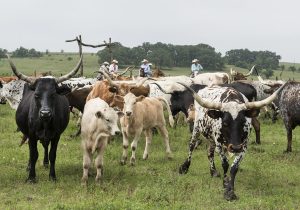 Economic turbulence, from the cattle boom’s bust in the 19th century to the contemporary challenges posed by international trade disputes, has been met with shrewd management and market diversification. Texas beef producers have honed their ability to pivot and persevere, ensuring the industry’s stability.
Economic turbulence, from the cattle boom’s bust in the 19th century to the contemporary challenges posed by international trade disputes, has been met with shrewd management and market diversification. Texas beef producers have honed their ability to pivot and persevere, ensuring the industry’s stability.
When faced with environmental adversities like droughts and extreme weather, Texas ranchers have risen to the occasion. They’ve embraced sustainable land use and advanced technologies for conserving water and protecting soil, bolstering their operations against nature’s unpredictability.
As consumer demands evolve towards healthier and more sustainable products, the Texas beef sector has not only kept pace but led the charge. By offering leaner cuts and embracing organic and grass-fed beef production, they’ve catered to a market that increasingly values transparency and quality.
In response to animal health crises, the industry has fortified its defenses, investing in rigorous health protocols and research to bolster herd immunity and preempt future outbreaks.
Collaborative efforts among research bodies, industry groups, and government agencies have been instrumental in reinforcing the industry’s resilience. These partnerships have fostered ongoing education and the adoption of innovative practices.
Looking to the horizon, Texas Beef continues to invest in its future, nurturing the next generation of ranchers through educational initiatives and youth programs. This foresight ensures the industry’s legacy and vitality for years to come.
Through a blend of practical innovation, community collaboration, and a commitment to future growth, the Texas beef industry has not just survived but thrived, solidifying its role as a global leader in beef production. The trials faced have sculpted an industry that is robust, dynamic, and poised for enduring success.
Adaptation to Challenges
The narrative of Texas beef is characterized by an unwavering ability to adapt. This flexibility has been pivotal in maintaining the industry’s sustainability and prosperity.
Facing livestock diseases head-on, the industry has implemented stringent biosecurity measures, vaccination programs, and advanced health monitoring systems to swiftly detect and manage outbreaks.
Economic fluctuations and rising operational costs have prompted a strategic shift in business models. Producers have broadened their revenue streams, embracing agritourism and other agricultural ventures while streamlining operations to enhance efficiency and minimize waste.
Addressing workforce challenges, the industry has invested in automation where practical and has focused on cultivating a skilled labor force through training and retention initiatives.
In the face of environmental and climatic challenges, Texas beef has adopted sustainable practices such as rotational grazing and water conservation to protect the rangeland and mitigate the effects of drought.
The industry’s response to shifting market demands has been proactive, offering transparency in its supply chain, certifying products to meet ethical and environmental standards, and engaging consumers directly to foster understanding of the production process.
Investment in research and development has kept Texas beef at the vanguard of advancements in genetics, nutrition, and environmental stewardship, enhancing productivity while reducing the ecological footprint.
As regulatory landscapes and trade agreements evolve, the industry has adeptly navigated new standards, advocating for beneficial trade conditions and adeptly managing market complexities both at home and abroad.
The collective resilience of Texas beef producers, supported by a network of industry organizations, educational institutions, and community backing, has enabled the industry to confront and adapt to myriad challenges, cementing its role as a bedrock of Texas’s economy and heritage.
1. When did cattle farming begin in Texas?
Cattle farming in Texas started in the late 1600s, introduced by Spanish missionaries to support their colonies. This marked the early beginnings of the Texas beef industry.
2. How did the Texas beef industry evolve during the 19th century?
In the 19th century, the Texas beef industry experienced significant expansion after the Civil War due to the high demand for beef in northern states. Cowboys began driving herds up to railway hubs in Kansas for shipment.
3. What is the significance of the ‘Chisholm Trail’ in the history of Texas beef?
The Chisholm Trail, used between 1867 and 1884, was a significant pathway for driving cattle from Texas to Kansas railheads. This trail greatly influenced the expansion of the Texas beef industry.
4. How did technology impact the Texas beef industry in the 20th century?
Technological advancements in the 20th century, such as refrigeration, railroads, better breeding techniques, and improved meat preservation and transportation, led to vast improvements in the Texas beef industry.
5. What challenges did Texas beef go through in the 21st century?
In the 21st century, Texas beef faced challenges like drought, diseases, split-market demand between grain-fed and grass-fed beef, and increased scrutiny of environmental and animal welfare issues.
6. How significant is the beef industry to Texas’s economy today?
Today, Texas leads the nation in cattle inventory, and the beef industry contributes significantly to the state’s economy. The Texan cattle industry represents an important cultural symbol and economic powerhouse.
If you are looking for premium Texas Beef to add to your cooler, look no further than We Speak Meat’s fine selection of grass-fed and grain-finished beef products shipped right to your door.

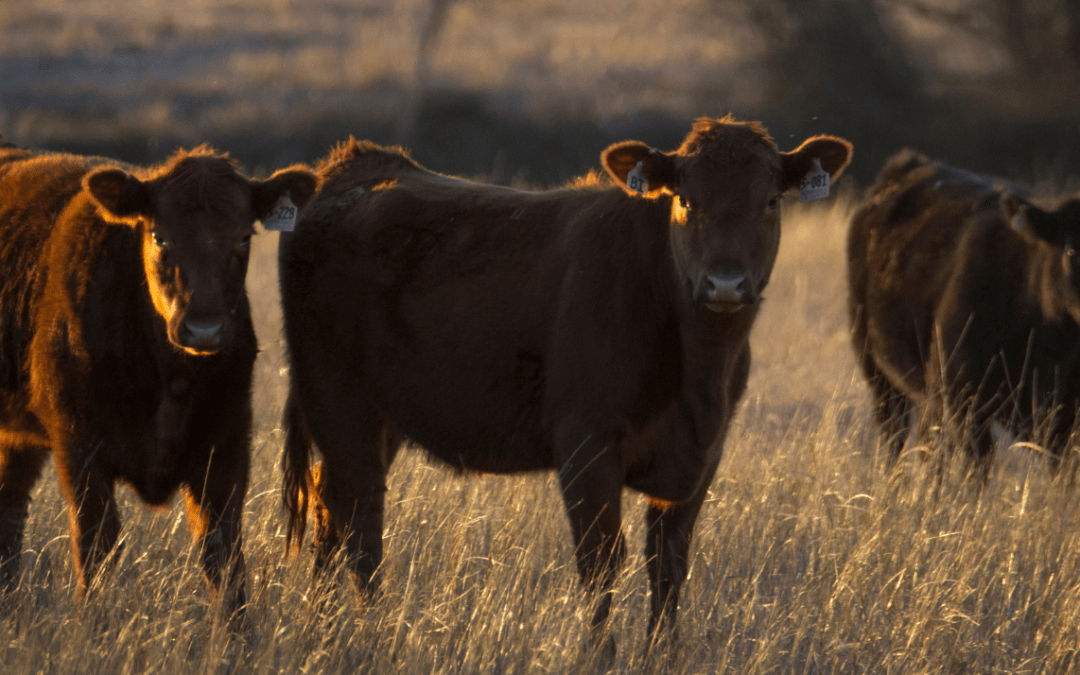
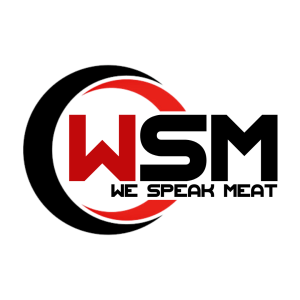
Texas Rocks!